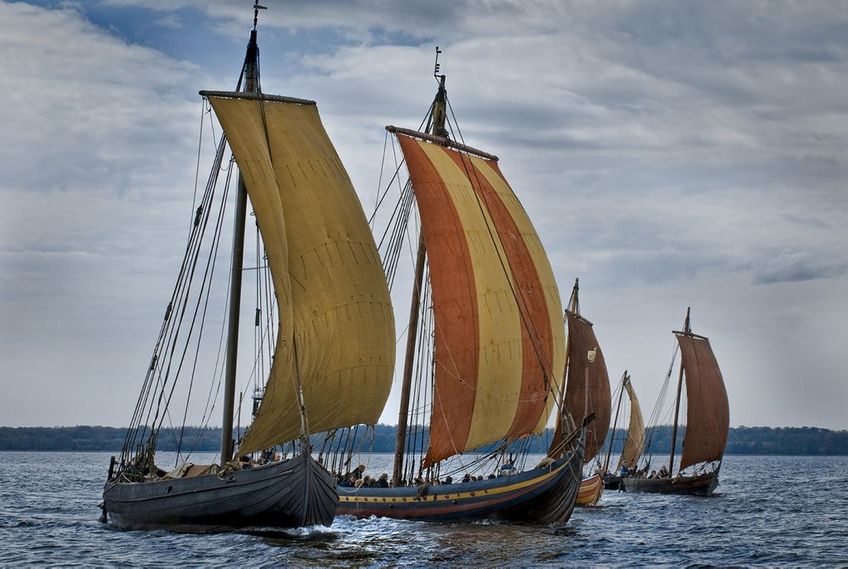Around the Viking ship
The Vikings had several types of ships: warships, merchant ships, everyday ships, etc. All the boats carried sails and most of them could also be rowed, but this did not apply to the heavy merchant ships.
Here you can read about how a Viking ship is built, about sails and ropes, as well as about the craftsmen who reconstruct the different parts for a new Viking ships.
The hull - the strong shell
Viking Age ships were both light and strong. There are two main reasons for this:
The planks and frames were cleaved and followed the tree’s fibres. This made the finished pieces very strong, even though their dimensions were reduced due to a desire to keep the overall weight of the ship down. The technique of cleaving was therefore critical in allowing the Vikings to build ships that were both light and strong.
Nordic clinker-built ships and boats were developed hundreds of years before Viking ships. The ships’ strength lay in this method of construction. The clinker-built boards, or the overlap between two boards, act as a longitudinal strengthening element in the hull. This allows for a greater distance between the frames. Together, this made the ships light and strong at the same time.
The sail
The Viking ship's sail made it possible to travel long distances over the open sea. Weaving the sails and adjusting it to the specofic ship was a lot of work. The Vikings used different materials for their sails. The two most important were flax and wool - both has its advantages and disadvantages:
Flax, which is a plant fiber, provides a light and strong sail. But it is a big job to work the flax fibers and make them ready for weaving, and in addition it rots easily.
A woolen sail is heavy but it's also more elastic and does not rot, but is harder to treat and seal.
The rope
The actual combinations of rope types used on the individual types of boat and ship is naturally very difficult to determine as local conditions play a great role. But by testing the different types on a full-scale reconstruction, crucial knowledge can be gained on strength and suitability.
